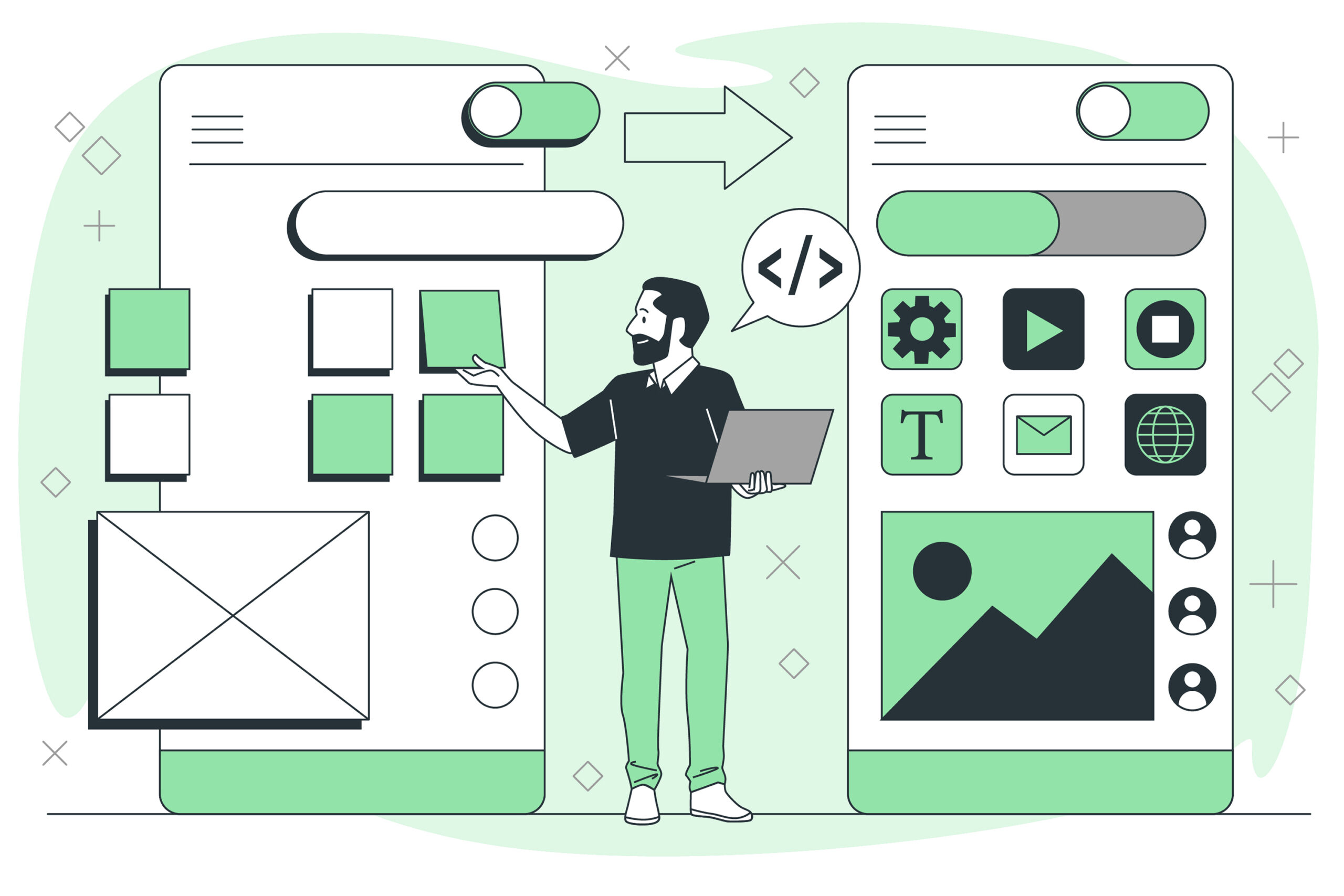What is user interface design?
The visual layout of a product’s digital interface, such as an app screen or website, is referred to as user interface (UI) design. It is the process of creating a visual experience’s interactive and visual elements, ensuring the user interface is both intuitive to use and aesthetically beautiful overall. Varieties of components from graphic design, UX design, and visual design, are used in the multidisciplinary field of user interface design.
Users are accustomed to specific patterns and layouts. Every element of a digital screen, from the color to the typography, affects how a user interacts and feels about an application or website. To guide the user and minimize cognitive load while producing stunning, one-of-a-kind experiences that bring the product to life, UI designers must masterfully arrange these components.
Especially in the current digitally-driven environment, UI design encompasses much more than just aesthetics. User interface design is essential for building brand recognition, loyalty, and trust. Good-looking digital experiences are now expected by customers rather than something to be enjoyed. Users will unavoidably switch to a competitor in the lack of good design.
The Evolution of User Interface Design
As one might expect, the UI designer’s position is relatively new. Computer technology was a revolutionary phenomenon in the late 20th century when most computers were thought to be functional. All of this was altered in the 1980s with the simultaneous release of Microsoft Windows and Apple Macintoshes. Companies came to understand the importance of a visually appealing digital interface when producing engaging user experiences.
Production of a more portable, streamlined version of the desktop computer, known as the laptop, started in the early 1990s. Launched in 1992, the first website consisted solely of text with sporadic splashes of the default hypertext blue. The 1990s saw the gradual introduction of additional user interface (UI) components, such as color schemes, typography, menus, and the like, into digital experiences, until the advent of the computer software plugin Flash altered the landscape. Web designers were able to produce any shape and animation they desired with just one tool for the first time. Websites became substantially more engaging with the release of Flash.
A new era of UI design began in 2007 with the release of Apple’s first iPhone. Users would never view their phones the same way again thanks to their sophisticated touchscreen functionality, and UI designers suddenly gained prominence.
2010 saw a stir in the UI design community when web designer Ethan Marcotte questioned how mobile UI design was approached. He suggested displaying the same content on a desktop computer but with a layout tailored to fit the screen of the device, rather than mobile devices having their unique websites. This insight gave rise to responsive design, which is now an essential component of user interface design.
UI design is a rapidly growing field these days, and even senior product designers are expected to have some knowledge of it.
What exactly do user interface designers do?
UI designers must guarantee that the product’s user interface is visually appealing, intuitive to use, and compliant with business objectives. They are also in charge of developing style guides and UI pattern libraries to ensure visual consistency throughout a digital product.
During the digital design process, user interface (UI) designers and user experience (UX) designers frequently collaborate closely. UI design is all about how a product looks and feels, whereas UX concentrates on optimizing a product for practical use. With the help of stunning color schemes, fonts, and shapes, UI designers will bring the information architecture, wireframes, and user mapping created by UX designers to life.
UI designers always keep accessibility and inclusivity in mind when creating user-friendly and intuitive interfaces. The implications of every design decision for the final user are continuously considered. A user’s experience is largely determined by their interactions with screens and other touchpoints, such as buttons that they may tap or pages they may scroll through. UI designers have the challenging job of taking into account every visual aspect of the user’s journey.
What qualities and abilities are most crucial for a user interface designer to possess?
Beautiful interfaces aren’t the only thing that UI designers are in charge of. Every design decision, no matter how minor, affects the user’s experience with the product. A career in user interface design necessitates a combination of technical expertise and tool-specific knowledge with specific soft skills. In summary, some of the most important UI design abilities and characteristics are as follows:
proficiency with widely used, industry-standard programs like Adobe XD, Figma, InVision, and Sketch
Proficiency in color theory, typography, UX, and interaction design principles, among other areas
an excellent sense of aesthetics and meticulous attention to detail—both in making designs that are aesthetically pleasing and recognizing when something is “off.”
An interest in learning about people and how they behave. The best UI designers work with empathy, keeping humans at the forefront, because UI design and user experience are closely related.
a certain level of technological proficiency. UI designers need to know how their designs will function across various platforms, devices, and screen sizes in addition to using computer-based tools. Being somewhat tech-aware is therefore beneficial (especially when liaising with developers)
Working together and communicating. UI designers rarely work alone; they frequently collaborate closely with content/UX writers, product managers, developers, and UX designers. As such, people skills are essential!
